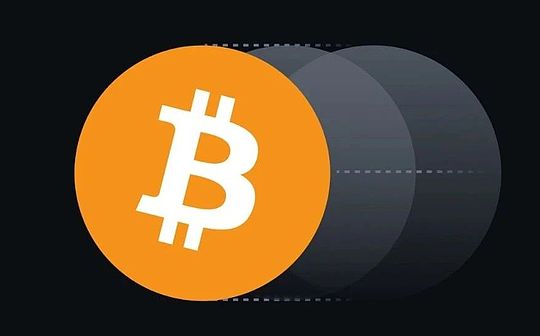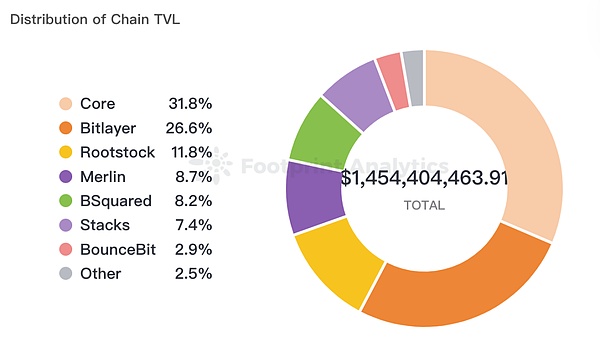
It has been more than a year since I started paying attention to the Bitcoin Layer2 track in August 2023.Like most people, the entire Bitcoin Layer2 track currently gives me the feeling:It’s very untidy, it feels cold!
In order not to offend people, I won’t be named one by one.
I feel that the current situation of Bitcoin Layer2 is: it has already been on the market, has poor performance, has not yet on the market, and its development is very evident.
The Bitcoin Layer2 track is really going to be cold?
I’ve been trying to find the real reason for this:
For example, is the investment institution not luxurious enough?
Of course not. Many BTC Layer2 projects have also obtained investments from leading institutions such as MultiCoin and Polychain.
Is the project team not going to cause trouble?
Of course not, many BTC Layer2 project teams are known for being particularly troublesome.
If it is not for the endorsement of the organization and the team’s ability to do things, there must be a deeper reason!
I’ve been thinking!
Until recently, I read BEVM (the team has always been good at technological innovation, but the ecological situation has also been broken) and released the latest technical framework white paper Super Bitcoin, which seems to have found the answer.
This white paper is very interesting, and it talks about one word throughout: sharing Bitcoin consensus security.
The slogan proposed is: Bitcoin Layer2, which cannot share Bitcoin consensus security, will die!
Very cruel!
But, it makes sense!
The Super Bitcoin white paper also proposes that the reason why Ethereum Layer2 was established is that Ethereum Layer2 can share Ethereum consensus security. People play Ethereum Layer2 based on the Internet trust in Ethereum.
However, almost all Bitcoin Layer2 do not have the consensus security of sharing Bitcoin. It is basically a chain with multiple signing wallets and an independent consensus. It has nothing to do with Bitcoin, and there is no consensus security of sharing Bitcoin.
Therefore, for a new chain that is known as Bitcoin Layer2 but has no relationship with Bitcoin consensus, users have no trust or consensus basis at all, so the market will certainly not buy it!
I found it very interesting, so I conducted in-depth research and now I will share some of the research results with you!
First, let’s figure out a few concepts first.
What is consensus security?What is shared consensus security?
What is consensus security?
Consensus security refers to the fact that in a blockchain network, nodes ensure the security and effectiveness of transactions through consistent consensus algorithms.For most blockchain networks, consensus security means that most nodes in the network need to reach a transaction consensus through some form of verification mechanism to resist external attacks or tampering.
It can be said that consensus security is the core of blockchain, and consensus security is the highest level of security, because consensus security is the maintenance of network security by the entire chain node at the consensus level.
Each independent public chain has its own consensus security mechanism, such as Bitcoin’s POW mechanism, Ethereum’s POS mechanism, TRON’s DPOS mechanism, Solana’s POH mechanism, etc.
However, the degree of consensus security of a public chain has no essential relationship with the mechanism used, and it is only related to the cost of breaking the network consensus.
For example, to undermine Bitcoin’s consensus, it is necessary to master 51% of the Bitcoin computing power to launch an effective attack on the Bitcoin network.Currently, the computing power of Bitcoin on the entire network is about 725EH/s, so you need to master the computing power scale of at least 370EH/s (51%) to launch an effective attack on Bitcoin.According to the current price of the Bitcoin computing power market, the cost of Bitcoin computing power of 370EH/s exceeds US$150 billion, and the corresponding electricity bills totals far exceed US$200 billion.
Public chains with POS mechanisms such as Ethereum can estimate their consensus security level (that is, the cost of attack) through the “total value of node staked tokens”.For example, the total amount of POS nodes pledged on the entire Ethereum network is about 35 million, and the current value is about 90 billion US dollars. Then, the cost of attacking the Ethereum network is about 46 billion US dollars.
Judging from the data, the cost of attacks on Bitcoin network consensus is more than 4 times that of attacks on Ethereum network consensus.Therefore, the consensus security of Bitcoin network is much greater than that of Ethereum!
Compared with other POS chains, for example, if the FDV is less than 10 billion and the pledge rate is less than 20%, then its “total value of node pledged tokens” is less than 2 billion US dollars, and the attack cost is only 1.1 billion US dollars.The degree of consensus security is relatively low.
Through the most intuitive “attack cost theory”, we can make clear judgments on the degree of consensus security of all public chains.
Judging from the data, the Bitcoin network is undoubtedly the safest blockchain!
So, what is shared consensus security?
Shared consensus security means that some blockchains (mainly sub-chains or Layer2) can borrow the consensus mechanism of the main chain to ensure their own security.This means that even if transactions are conducted on layer 2, side chains or parallel chains, users can still enjoy the main chain level security guarantee.For example:
1. Polkadot and parachains:
In Polkadot’s architectural design, the main chain (Relay Chain) is responsible for providing global security, while each parallel chain ensures its own security through the consensus mechanism of the main chain.Parachains can focus on their own specific functions without sacrificing security because they rely on Polkadot’s main chain consensus.(Of course, the overall market value of DOT is about US$6 billion, and the DOT pledge rate is about 58%, which is about US$3.48 billion. The cost of cyberattack is about 1.77 billion, and the security level of network consensus is low. Therefore, even if you share the consensus of PolkadotSafety is not very meaningful, and this is also one of the important reasons why the Polkadot ecosystem has been lukewarm)
2. Ethereum and Ethereum Layer 2:
Ethereum’s Layer 2 solutions, such as Optimistic Rollup and ZK-Rollup, use the main chain’s security mechanism to ensure the transaction security of Layer 2 by recording simplified transaction status on the Ethereum main network.This means that although Layer 2 can handle a large number of transactions independently, its security still depends on the consensus mechanism of Ethereum.
Through these examples, we can see that the core of shared consensus security is that it enables developers to create sub-chains or layer-2 networks with independent scalability while maintaining mainchain-level security.
So, why is Bitcoin Layer2 necessary to share Bitcoin consensus security?
The reason is clear at a glance!
Because all mainstream Layer2s do not have their own independent consensus and they all exist on the consensus of the main network.For example, Ethereum Layer2, whether it is Arbitrum, ZKSync or BASE, does not have its own consensus. The entire Layer2 network relies entirely on the official sequencer (that is, Sequencer, generally Layer2 only has one official sequencer) to sort it to the main network., ultimately relying on the main network to ensure the security and credibility of Layer2.
That is, Ethereum Layer2 is shared with Ethereum consensus security.The essence of users trusting Ethereum Layer2 is to trust Ethereum’s security, not Layer2 itself.
Then, if a Bitcoin Layer2 cannot share the consensus security of Bitcoin, then, it is not a real Bitcoin Layer2.Without the Bitcoin network to ensure security, Bitcoin Layer2 will not be able to truly gain the trust of users and funds.(After all, users need to put real money into Layer2 to play. How can they participate without trust?)
This is the dilemma that all Bitcoin Layer2 are facing now.
There are two sets of data that can support this point of view:
First: TVL comparison between Bitcoin layer2 and Ethereum Layer2

Currently, the TVL on the Bitcoin Layer2 chain is about US$1.45 billion, while the TVL on the Ethereum Layer2 chain is about US$36 billion (data comes from footprint.network).The difference between the two is more than 30 times.This means that funds have much lower trust in the Bitcoin Layer2 chain than Ethereum Layer2.
Second: Comparison of average market value between Bitcoin layer2 and Ethereum Layer2
The average market value of Bitcoin Layer2 is basically below US$1 billion (currently, the valuation of most Bitcoin Layer2 is below US$500 million), while the market value of mainstream Ethereum Layer2 is basically 5 billion or even 10 billion US dollars.The difference between the two is 5-10 times.This means that the capital market’s confidence in the Bitcoin Layer2 track is much lower than that of Ethereum Laye2.
According to the above blockchain network consensus “attack cost theory”, the consensus security level of Bitcoin network is more than 4 times that of Ethereum.Then, the theoretical valuation of Bitcoin Layer2 should be more than 4 times the theoretical valuation of Ethereum Layer2, but now it is exactly the opposite!
What is the reason?
The reason is: Almost all Bitcoin Layer2 cannot share the consensus security of Bitcoin.They all use a chain that has nothing to do with Bitcoin, plus a multi-signature solution, and are called Bitcoin Layer2.Then, it is attempted to gain user trust through the Bitcoin Layer2 concept plus airdrop expectations.However, real data represents the real attitude of funds and users.
Bitcoin Layer2, which cannot share Bitcoin consensus security, is indeed unable to gain user trust!
No wonder the entire Bitcoin Layer2 track is extremely collapsed, and this is the reason!
So, is there really no Bitcoin Layer2 that can be safe to share Bitcoin consensus?
There is really one!
That’s the Lightning Network!
Without any token incentives, Lightning Network can still maintain 5,000 BTC circulation on the Internet for a long time. This data has exceeded the so-called Bitcoin Layer2, which relies on token incentives to attract BTC.
What is the reason?
There is only one reason, that is: Lightning Network fully shares Bitcoin consensus security.
People choose to use Lightning Network because they trust the security of Bitcoin and have the same security as Bitcoin. This is the root of the problem.
So, how does Lightning Network achieve consensus security for sharing Bitcoin?
The principle is as follows:
A state channel can be freely established between the nodes of the Lightning Network (this state channel is a fast payment channel established on the Bitcoin chain, and the solution was proposed by Satoshi Nakamoto).The opening of a channel involves creating signature outputs on the Bitcoin blockchain, while closing the channel requires broadcasting the final state to the main chain, which is the core mechanism for the Lightning Network to share Bitcoin consensus security.If you compare carefully, you will know that the rollup solution of Ethereum Layer2 borrows the concept of state channel of the Lightning Network)
Each channel status update generates new promise transactions that can be broadcast to the Bitcoin main network when needed. The promise transactions are designed to ensure that even if one party does not cooperate, the other party can broadcast the latest promises.Transactions to close the channel and get the funds you deserve.This mechanism directly relies on Bitcoin’s consensus rules and security, so that the security of the Lightning Network is actually guaranteed by the Bitcoin network, that is, the consensus security of the entire sharing of Bitcoin.
The Lightning Network, which can share Bitcoin consensus security, can attract more than 5,000 BTC to circulate in the Lightning Network for many years even without any token incentives. This is the sense of security that the sharing Bitcoin consensus brings to users.
Of course, the Bitcoin Layer2, Lightning Network, also has its shortcomings.
That is, Lightning Network only has payment scenarios and does not support more complex smart contract scenarios.
Super Bitcoin seized the point of Lightning Network and proposed its own solution: that is, to use Bitcoin as the basic ledger layer, Lightning Network as the only Bitcoin layer 2, and then upgrade the dot-shaped Lightning Network nodes.As a chain node that supports smart contracts, it breaks through the limitation that Lightning Network can only make payments but cannot make smart contracts, thus achieving further expansion of Bitcoin, that is, realizing Bitcoin while ensuring the security of shared Bitcoin consensus.infinite expansion.
Not only that, Super Bitcoin also uses modular abstraction to securely share Bitcoin consensus with various Lightning Chains built on Super Bitcoin’s modular Stack function. This is Super Bitcoin’s solution.If you want to know more details, you can study Super Bitcoin’s white paper https://bevm-blog.webflow.io/post/super-bitcoin-a-value-internet-sharing-bitcoins-consensus-security
To summarize:
By studying the importance of “sharing Bitcoin consensus security” to Bitcoin Laye2, I found the deep reason why the current Bitcoin Layer2 track is so down-No consensus shared by Bitcoin is secure!
If Bitcoin Layer2 wants to usher in real development in the future, it really must return to Bitcoin and study how to share Bitcoin consensus security.As the only Bitcoin Layer2 that can share Bitcoin consensus security at present, it is indeed of great reference value.If you really want to develop a Bitcoin expansion plan, go back to Bitcoin, and return to the direction of shared Bitcoin consensus security (such as based on the Lightning Network), it may be the only way out at present.








